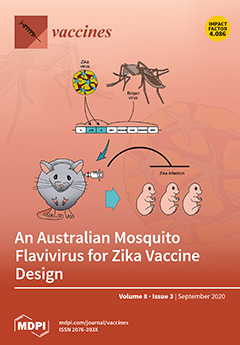The carbohydrate antigen dimeric Lewis X (DimLe
x), which accumulates in colonic and liver adenocarcinomas, is a valuable target to develop anti-cancer therapeutics. Using the native DimLe
x antigen as a vaccine would elicit an autoimmune response against the Le
x antigen found on normal, healthy cells. Thus, we aim to study the immunogenic potential of DimLe
x and search internal epitopes displayed by DimLe
x that remain to be recognized by anti-DimLe
x monoclonal antibodies (mAbs) but no longer possess epitopes recognized by anti-Le
x mAbs. In this context, we attempted to map the epitope recognized by anti-DimLe
x mAb SH2 by titrations and competitive inhibition experiments using oligosaccharide fragments of DimLe
x as well as Le
x analogues. We compare our results with that reported for anti-Le
x mAb SH1 and anti-polymeric Le
x mAbs 1G5F6 and 291-2G3-A. While SH1 recognizes an epitope localized to the non-reducing end Le
x trisaccharide, SH2, 1G5F6, and 291-2G3-A have greater affinity for DimLe
x conjugates than for Le
x conjugates. We show, however, that the Le
x trisaccharide is still an important recognition element for SH2, which (like 1G5F6 and 291-2G3-A) makes contacts with all three sugar units of Le
x. In contrast to mAb SH1, anti-polymeric Le
x mAbs make contact with the Glc
NAc acetamido group, suggesting that epitopes extend further from the non-reducing end Le
x. Results with SH2 show that this epitope is only recognized when DimLe
x is presented by glycoconjugates. We have reported that DimLe
x adopts two conformations around the β-
d-Glc
NAc-(1→3)-
d-Gal bond connecting the Le
x trisaccharides. We propose that only one of these conformations is recognized by SH2 and that this conformation is favored when the hexasaccharide is presented as part of a glycoconjugate such as DimLe
x-bovine serum albumin (DimLe
x-BSA). Proper presentation of the oligosaccharide candidate via conjugation to a protein or lipid is essential for the design of an anti-cancer vaccine or immunotherapeutic based on DimLe
x.
Full article






